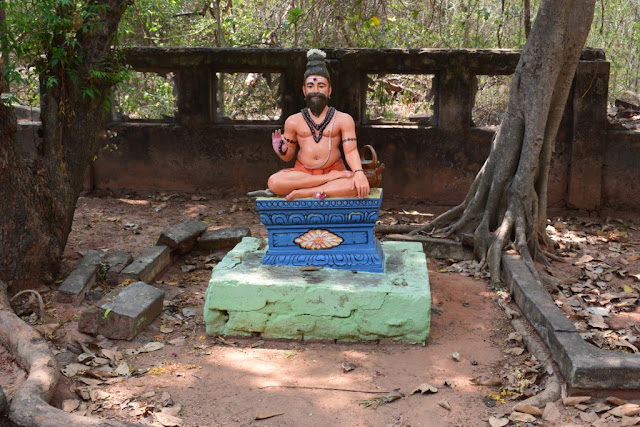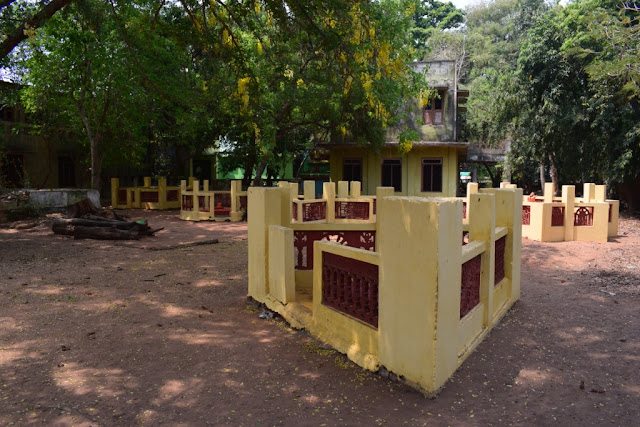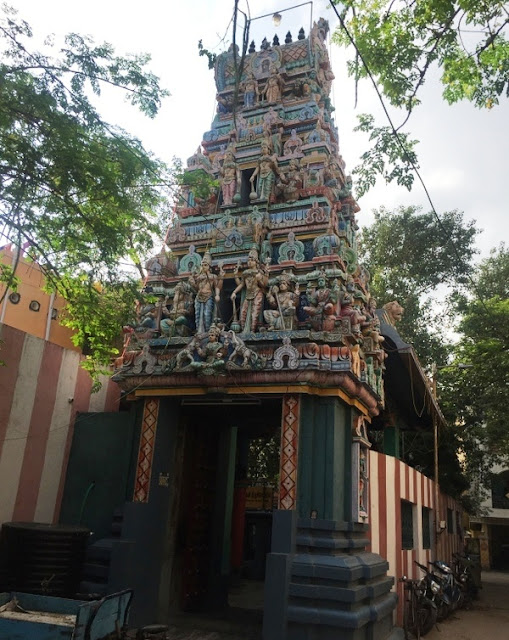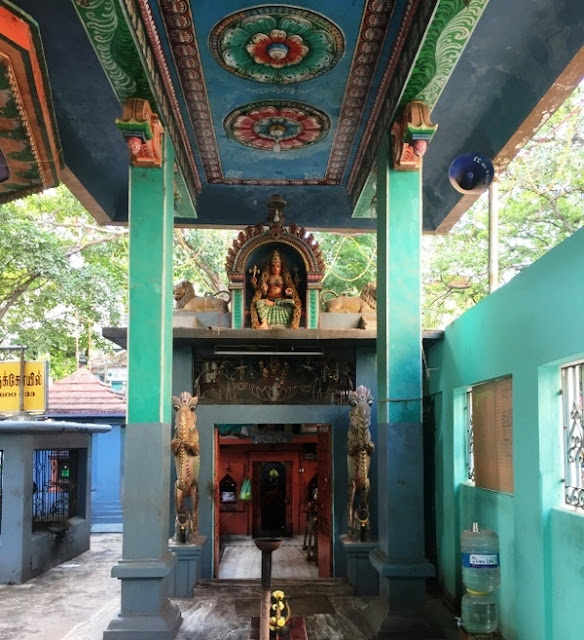Shiva Thandeswarar Temple,
Sendurai, Ariyalur
Shiva Thandeswarar Temple is a
Hindu Temple dedicated to Lord Shiva located at Sendurai Town in Sendurai Taluk
in Ariyalur District of Tamil Nadu. The Temple is also called as Sendurai
Mahadevar Temple. Presiding Deity is called as Shiva Thandeswarar /
Theerkapureeswarar and Mother is called as Prashanna Nayagi. The Temple
conducts 4 rituals daily. This temple is administrated by the Hindu Religious
& Charitable Endowments Department Tamilnadu.
Legends
Theerkapureeswarar:
Once, a forest near this place
was called as Neivanam. A Maha Siddha used to live in this forest. Hence, the
village came to be called as Siddhar Thurai. Later it got corrupted to
Sendurai. It is believed that the Siddha created a lake and named as Siddhar
Eri. Now the same lake was called as Siddheri. It is also believed that the
Siddhar installed a Shiva Linga under a Vilwam tree and started worshipping
Lord Shiva. He acquired Ashtama Siddhi due to his intense prayers. People from
the nearby areas visited him for his blessings.
A local chieftain from
Pazhuvettaraiyar clan ruling the surrounding area came to know about the
Siddhar. He visited him. On seeing the Chieftain, Siddhar instructed him to
build a Shiva Temple for child Boon. As instructed, chieftain built this temple
by obtaining permission from his overlord Chola Emperor Rajaraja Chola and
worshipped Lord Shiva sincerely. Later, he was blessed with children. Jeeva
Samadhi of the Siddhar is located at the backside of the Temple on the North
Street. Since, Lord Shiva fulfilled the wishes of chieftain, he came to be
called as Theerkapureeswarar, now he is called as Shiva Thandeswarar.
Sendurai:
The place was abounded with red
sands and water resources. Hence it came to be called as Thanpozhil Sendurai.
Later got corrupted to Sendurai.
Kaaraikaattu Thanda Naadu:
In ancient times, a part of this
place was a forest containing Vela, Tamarind, Karungali, Vanni, Illupai, Vila
and Karai Trees. Hence, it came to be called as Kaaraikaattu Thanda Naadu as
per the inscriptions of Vikrama Chola.
History
The Temple is believed to be
built by a local chieftain from Pazhuvettaraiyar clan who was ruling over the
surrounding area. The Temple is believed to be built before the construction of
Thanjavur Big Temple. There were about five inscriptions and two copper plate
inscriptions, which talks about the antiquity of this Temple. It is also
believed that Kundavai Nachiyar, sister of Rajaraja Chola, visited during the
construction of this Temple and named the Lord as Mahadevar.
The
Temple
The Temple is situated on the
north east corner of the town. This is an east facing Temple with five tiered
Rajagopuram of about 81 feet high. The Temple has two prakarams. Nandi, Bali
Peedam and Dwajastambam can be found immediately after the Rajagopuram. There
is an inner gopuram, serves as gateway to the inner prakaram. Yagasala Mandapam
and Vahana Mandapam can be found in the area between Rajagopuram and Inner
Gopuram. Vinayaga and Murugan can be found on each side of the inner gopuram.
The Sanctum Sanctorum consists
of Artha Mandapam, Maha Mandapam and Sanctum. Presiding Deity is called as
Shiva Thandeswarar / Theerkapureeswarar and is facing east. He is housed in the
sanctum in the form of Lingam. Lord is a Swayambhu Moorthy. Sun Rays will fall
on Lord Shiva on 1st day of Chithirai at 06.05 AM. Vinayaga, Nataraja and
Utsava Idols can be seen in the Maha Mandapam. Sanctum Sanctorum is surrounded
by cloistered Mandapam. Mother is called as Prashanna Nayagi. She is housed in
separate south facing shrine. Chandikeswarar Shrine is situated between sanctum
and Mother Shrine.
Madapalli, Sthala Vriksham
(Vanni Tree) and Shrines of 63 Nayanmars & Saptha Mathas can be found in
the western side of inner prakaram. Kodi
Vinayagar, Naalvar, Shiva Lingam, Lord Murugan with his consorts Valli &
Deivanai, Sokkanathar, Vishwanathar, Pancha Lingams and Gaja Lakshmi can be
found in the northern side of the inner prakaram. Nataraja Sabha can be found
in north east corner of the inner prakaram. Navagraha Shrine is situated next
to Nataraja Sabha. Bhairavar, Suryan and Chandran in the form of Lingam can be
found in the eastern side of inner prakaram.
Temple
Opening Time
The Temple remains open from
07.00 AM to 12.00 Noon and 04.00 PM to 07.00 PM.
Festivals
10 days Panguni Brahmotsavam,
Chithirai Tamil New Year, Vaikasi Visakam, Aani Uthiram, Aadi Pooram, Purattasi
Navaratri, Karthigai Deepam, Somavaram, Margazhi Thiruvadhirai, Thai Poosam and
Monthly Pradoshams are celebrated here.
Connectivity
The Temple is located at about
200 meters from Sendurai Bus Stand, 1 Km from Sendurai Railway Station, 20 Kms
from Ariyalur, 20 Kms from Udayarpalayam, 24 Kms from Jayamkondam, 34 Kms from
Gangaikonda Cholapuram and 105 Kms from Trichy Airport. The Temple is situated on
Chennai – Trichy Railway Line. Bus facilities are available from Ariyalur,
Chennai, Trichy, Thanjavur, Kumbakonam, Jayamkondan, Thittagudi and Pennadam.
























































